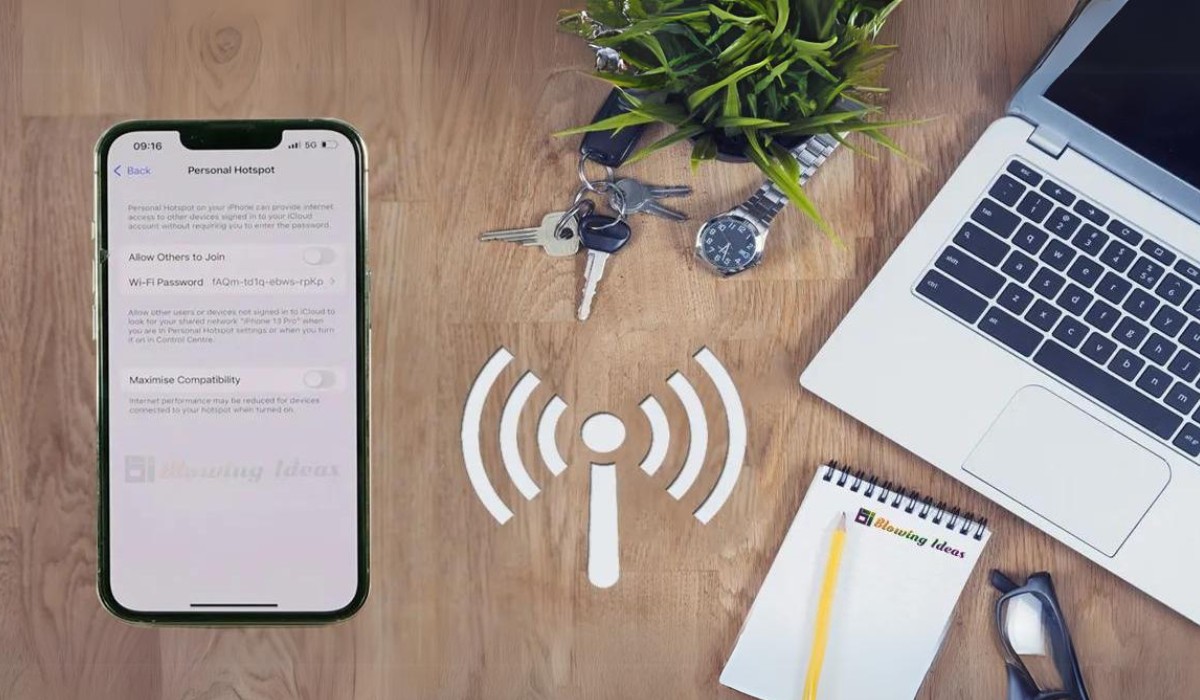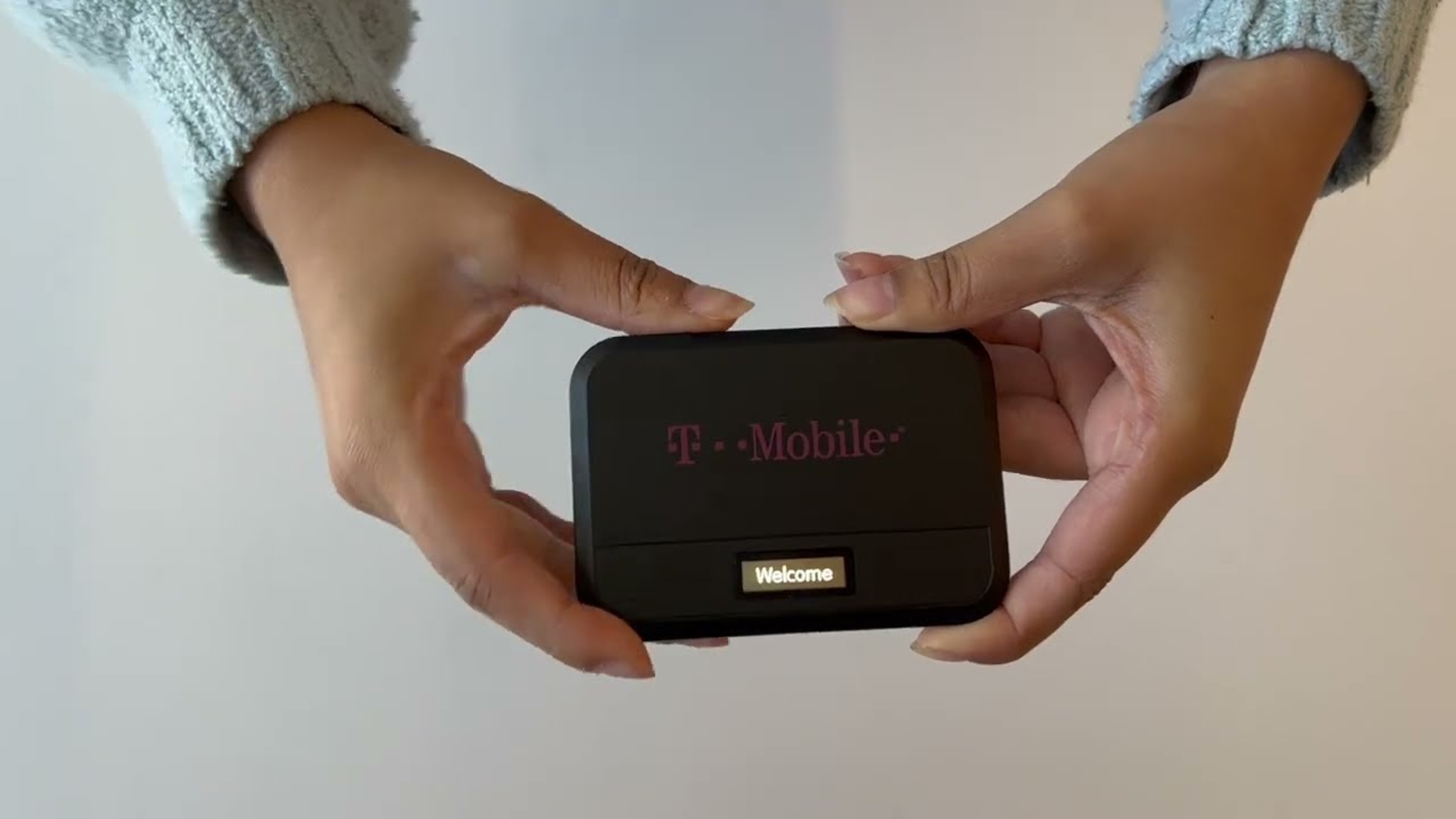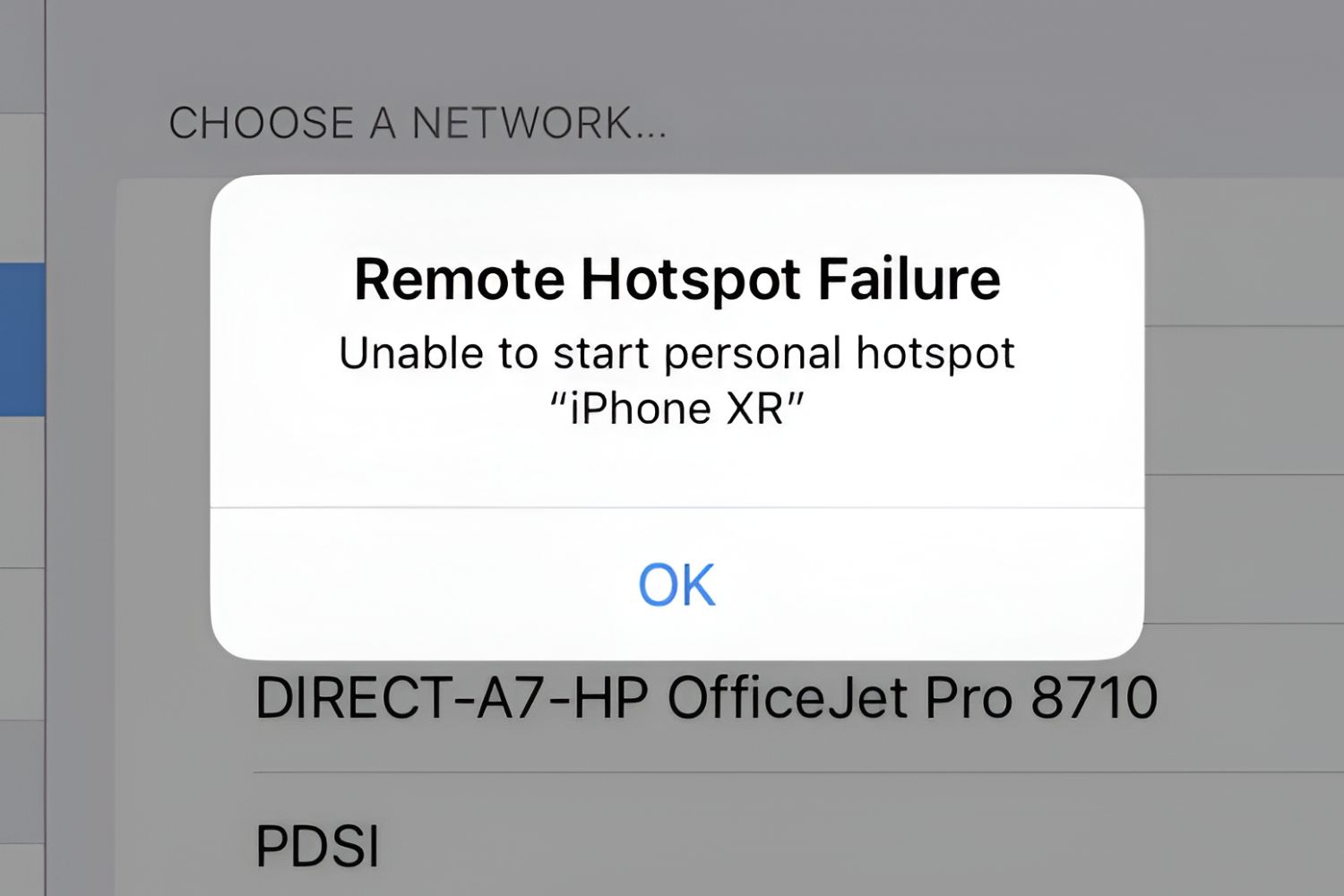Introduction
Dealing with connectivity issues can be frustrating, especially when you rely on a mobile hotspot to stay connected on the go. Whether you're working remotely, streaming your favorite content, or simply trying to stay connected with friends and family, a stable hotspot connection is essential. However, encountering issues such as slow or inconsistent connections can disrupt your online activities and hinder productivity. In this article, we will explore troubleshooting steps to help you address common hotspot connection issues and get you back online seamlessly.
A reliable hotspot connection is crucial for individuals and professionals alike. From accessing important work documents to staying connected with loved ones, a functional hotspot ensures that you can stay productive and engaged regardless of your location. When issues arise, it's essential to have the knowledge and tools to troubleshoot and resolve them effectively. This guide aims to provide you with practical solutions to address hotspot connection issues, empowering you to regain a stable and consistent online experience.
By following the troubleshooting steps outlined in this article, you can take proactive measures to identify and resolve hotspot connectivity issues. From checking network coverage and verifying hotspot settings to addressing potential interference and seeking assistance from your service provider, each step is designed to help you navigate and resolve common connectivity challenges. With a clear understanding of the underlying causes and practical solutions, you can approach hotspot connection issues with confidence and resolve them efficiently.
Now, let's delve into the essential troubleshooting steps to address hotspot connection issues and ensure that you can enjoy a seamless online experience wherever you are.
Check Network Coverage
Before delving into complex troubleshooting steps, it's essential to start with a fundamental aspect of hotspot connectivity: network coverage. The availability and strength of network signals play a pivotal role in determining the reliability of your hotspot connection. Here's how you can assess and address network coverage issues:
-
Signal Strength: Begin by assessing the signal strength in your current location. If you're experiencing connectivity issues, it's crucial to determine whether the network signal is strong enough to support a stable hotspot connection. Most devices display signal strength bars or indicators, providing a quick visual reference. If the signal is weak or fluctuating, consider relocating to an area with better network coverage.
-
Network Provider's Coverage Map: Consult your network provider's coverage map to gain insights into the expected signal strength and coverage in your current location. Many providers offer online tools or mobile apps that allow users to check coverage areas and signal strength. By referencing the coverage map, you can identify areas with optimal network coverage and make informed decisions about your current location.
-
External Factors: Take into account external factors that can impact network coverage, such as buildings, natural terrain, and weather conditions. Tall structures, dense foliage, and adverse weather can potentially obstruct or weaken network signals. If you're indoors, consider moving closer to a window or an open area to improve signal reception.
-
Roaming: If you're in an area where your network provider requires roaming, ensure that your hotspot device is set up to enable roaming. Roaming allows your device to connect to partner networks when outside your provider's coverage area, expanding your access to network signals.
-
Alternative Networks: Explore the availability of alternative networks in your area. Some hotspot devices allow users to manually select a preferred network, providing an opportunity to switch to a different network with stronger coverage if available.
By thoroughly assessing network coverage and considering these factors, you can gain valuable insights into the strength and availability of network signals in your current location. Addressing network coverage issues lays a solid foundation for troubleshooting hotspot connectivity, setting the stage for further steps to resolve any remaining issues.
Remember, a stable and reliable hotspot connection begins with a strong network signal. By proactively evaluating network coverage, you can make informed decisions to optimize your connectivity and address potential challenges effectively.
Restart Hotspot Device
Restarting your hotspot device is a fundamental yet often overlooked troubleshooting step that can effectively resolve a wide range of connectivity issues. Just like any electronic device, hotspots can encounter temporary glitches or software hiccups that impede their performance. By restarting the device, you initiate a fresh start, allowing it to reestablish connections and clear any potential system errors. Here's a detailed look at how to restart your hotspot device and the potential benefits it offers:
How to Restart
-
Power Off: Begin by powering off your hotspot device. Locate the power button or switch and hold it down to initiate the shutdown process. Depending on the device model, you may need to press and hold the power button for a few seconds until the screen indicates that the device is powering off.
-
Wait: Once the device is powered off, allow it to remain idle for a brief period. This waiting time enables the device to fully shut down and clear any residual processes.
-
Power On: After a short interval, power on the hotspot device by pressing the power button or switch. As the device boots up, you'll observe the startup sequence, and the screen will display indicators of the device coming online.
Benefits of Restarting
-
Clearing System Cache: Restarting the hotspot device clears temporary system files and cache, which can accumulate over time and impact performance. By initiating a fresh start, you effectively clear these temporary files, potentially resolving underlying software-related issues.
-
Reestablishing Connections: When a hotspot device is restarted, it initiates the process of reconnecting to the network and establishing fresh connections. This can address intermittent connectivity issues and ensure a more stable connection upon reboot.
-
Software Refresh: A restart prompts the device to reload its software components, potentially resolving software glitches or conflicts that may be hindering its functionality. This can lead to improved performance and stability.
Additional Considerations
-
Firmware Updates: After restarting your hotspot device, consider checking for any available firmware updates. Manufacturers often release updates to address performance issues and enhance device functionality. Updating the firmware can further optimize the device's performance and address underlying software-related issues.
-
Battery Removal (If Applicable): For hotspot devices with removable batteries, consider removing the battery after powering off the device. After a brief interval, reinsert the battery and power on the device. This additional step can help ensure a complete power cycle and may address certain hardware-related issues.
By incorporating the simple yet effective step of restarting your hotspot device into your troubleshooting routine, you can proactively address a myriad of connectivity issues. This straightforward action serves as a foundational troubleshooting measure, often yielding significant improvements in hotspot performance and connectivity reliability.
Verify Hotspot Settings
Ensuring that your hotspot settings are configured correctly is paramount to maintaining a stable and reliable connection. By verifying and adjusting the settings as needed, you can address potential configuration issues and optimize the performance of your hotspot device. Here's a detailed look at the essential settings to verify and the steps to take to ensure optimal configuration:
Network Name (SSID) and Password
Begin by confirming that the network name (SSID) and password for your hotspot are accurately set up. These credentials are essential for identifying and connecting to your hotspot network. Access the hotspot settings through the device's interface or mobile app and verify the following:
-
Network Name (SSID): Ensure that the network name is easily recognizable and distinct, allowing users to identify your hotspot amidst other available networks. If the network name is generic or ambiguous, consider customizing it to reflect your personal or business identity.
-
Password: Verify that the password for your hotspot network is secure and unique. A strong password helps safeguard your connection from unauthorized access and potential security threats. If needed, update the password to adhere to best practices for network security.
Security and Encryption
Check the security and encryption settings for your hotspot to ensure that data transmitted over the network is protected. Encryption protocols such as WPA2 (Wi-Fi Protected Access 2) offer robust security measures. Access the hotspot settings and verify the following security parameters:
-
Encryption Protocol: Confirm that the encryption protocol is set to WPA2 or a similarly secure standard. Avoid using outdated or insecure encryption methods that may compromise the security of your connection.
-
Passphrase Complexity: Review the passphrase complexity settings to ensure that the password used to access the hotspot network meets recommended security standards. Consider utilizing a passphrase with a combination of uppercase and lowercase letters, numbers, and special characters for enhanced security.
Device Connection Limits
Some hotspot devices allow users to set limits on the number of devices that can simultaneously connect to the hotspot. Verify the device connection limits in the hotspot settings and adjust them as needed based on your usage requirements. Ensure that the configured limits accommodate the number of devices you intend to connect to the hotspot.
Band and Channel Selection
If your hotspot device supports dual-band connectivity (2.4GHz and 5GHz), verify the band and channel selection settings. Dual-band hotspots offer flexibility in choosing the optimal frequency band for connectivity. Access the hotspot settings and verify the following:
-
Band Selection: Confirm whether the hotspot is configured to broadcast on the 2.4GHz band, the 5GHz band, or both. Depending on your specific requirements and the capabilities of your connected devices, adjust the band selection for optimal performance.
-
Channel Selection: Check the channel settings to ensure that the hotspot is operating on a channel with minimal interference. In crowded Wi-Fi environments, selecting an optimal channel can mitigate interference and improve overall connectivity.
By meticulously verifying and adjusting these essential hotspot settings, you can proactively address configuration-related issues and optimize the performance and security of your hotspot connection. Taking the time to review and fine-tune these settings empowers you to create a robust and reliable hotspot environment tailored to your specific needs and usage scenarios.
Update Hotspot Software
Ensuring that your hotspot device is running the latest software version is crucial for maintaining optimal performance, security, and compatibility. Manufacturers regularly release software updates to address known issues, enhance features, and fortify the device against potential vulnerabilities. By keeping your hotspot software up to date, you can proactively address software-related issues and ensure a seamless connectivity experience. Here's a comprehensive look at the importance of updating hotspot software and the steps to take to initiate the update process.
Importance of Software Updates
Software updates play a pivotal role in maintaining the overall functionality and security of your hotspot device. These updates often include bug fixes, performance optimizations, and security patches that address known vulnerabilities. By staying current with software updates, you benefit from the following:
- Enhanced Stability: Software updates can resolve underlying stability issues, leading to a more reliable hotspot connection and consistent performance.
- Security Enhancements: Manufacturers often release updates to mitigate potential security vulnerabilities and bolster the device's defenses against emerging threats, safeguarding your data and online activities.
- Feature Enhancements: Updates may introduce new features or improvements to existing functionalities, enhancing the overall user experience and expanding the capabilities of the hotspot device.
Initiating the Update Process
To update the software on your hotspot device, follow these general steps:
-
Check for Updates: Access the device settings or management interface to locate the software update section. Look for an option to check for updates, which may be found under the system or software settings.
-
Download and Install: If a software update is available, initiate the download and installation process. Depending on the device, this may require a stable internet connection and sufficient battery or power source.
-
Follow Prompts: During the update process, follow any on-screen prompts or instructions provided by the device to ensure a seamless update experience. It's essential to allow the update to complete without interruption.
-
Restart if Required: After the update is installed, the device may prompt you to restart. Ensure that you comply with any restart requests to finalize the update process.
Additional Considerations
-
Automatic Updates: Some hotspot devices offer the option for automatic software updates. Enabling this feature ensures that your device receives updates as soon as they become available, minimizing the need for manual intervention.
-
Firmware Updates: In addition to software updates, manufacturers may release firmware updates that address underlying hardware-related issues and further enhance the device's performance. Check for firmware updates in conjunction with software updates to comprehensively optimize your hotspot device.
By prioritizing the regular updating of your hotspot software, you can proactively address potential software-related issues, enhance security, and benefit from the latest features and improvements. This proactive approach ensures that your hotspot device operates at its best, delivering a seamless and reliable connectivity experience.
Check for Interference
Interference from external sources can significantly impact the performance and reliability of your hotspot connection. Identifying and mitigating potential sources of interference is crucial for maintaining a stable and consistent connectivity experience. Here's a comprehensive exploration of the steps you can take to check for interference and address potential issues:
Physical Obstructions
Evaluate your immediate surroundings for physical obstructions that may impede the transmission of wireless signals. Walls, large furniture, and metallic objects can obstruct the propagation of Wi-Fi signals, leading to diminished connectivity. Consider repositioning your hotspot device to minimize the impact of physical obstructions and optimize signal propagation.
Nearby Electronic Devices
The presence of nearby electronic devices operating on similar frequencies can contribute to interference. Devices such as cordless phones, microwave ovens, and Bluetooth-enabled gadgets can emit signals that interfere with Wi-Fi transmissions. Identify and relocate such devices away from your hotspot to reduce potential interference and improve connectivity.
Wi-Fi Channel Congestion
In densely populated areas or environments with multiple Wi-Fi networks, channel congestion can occur. This congestion can lead to interference and reduced network performance. Use a Wi-Fi analyzer tool to identify the least congested channels and adjust your hotspot's channel settings accordingly. By selecting a less congested channel, you can minimize interference and optimize network performance.
Radio Frequency Interference
Radio frequency interference from external sources, such as neighboring wireless networks, electronic equipment, or industrial machinery, can disrupt Wi-Fi signals. Conduct a thorough assessment of your environment to identify potential sources of radio frequency interference. If possible, reposition your hotspot device or utilize shielding materials to mitigate the impact of external interference sources.
Signal Overlapping
In cases where multiple access points or routers are in close proximity, signal overlapping can occur, leading to interference and degraded performance. Adjust the transmission power of your hotspot device to minimize signal overlap with neighboring networks. By optimizing the signal coverage area, you can reduce the likelihood of interference and enhance the overall stability of your hotspot connection.
By systematically addressing potential sources of interference, you can proactively optimize your hotspot's connectivity and minimize the impact of external factors on its performance. These proactive measures empower you to create an environment conducive to stable and reliable connectivity, ensuring an enhanced online experience.
Contact Service Provider
If you've diligently followed the preceding troubleshooting steps and are still encountering persistent hotspot connectivity issues, reaching out to your service provider is a crucial next step. Your service provider possesses the expertise and resources to address underlying network-related issues and provide targeted solutions to ensure a seamless connectivity experience. Here's a detailed exploration of the essential considerations and steps to take when contacting your service provider for assistance.
Assessing Network Outages
Before contacting your service provider, it's beneficial to assess the possibility of network outages or service disruptions in your area. Check for any reported network issues or outages on the service provider's official website, mobile app, or customer support channels. By confirming the presence of network-related issues, you can gain insights into potential underlying causes of your connectivity challenges.
Customer Support Channels
Utilize the customer support channels provided by your service provider to seek assistance with hotspot connectivity issues. Most service providers offer multiple support options, including phone support, live chat, email support, and in-person assistance at designated service centers. Engaging with customer support representatives allows you to articulate your specific connectivity issues and receive personalized guidance tailored to your situation.
Detailed Description of Issues
When contacting your service provider, provide a detailed description of the hotspot connectivity issues you're experiencing. Articulate the nature of the issues, including slow speeds, frequent disconnections, or any error messages displayed on your device. Providing specific details enables the support team to accurately assess and diagnose the underlying causes of the connectivity issues.
Diagnostic Assistance
Service providers often have the capability to remotely diagnose and troubleshoot connectivity issues with your hotspot device. Upon contacting customer support, inquire about the availability of diagnostic tools or remote assistance options. By allowing the support team to remotely assess your device and network connectivity, you can expedite the troubleshooting process and receive targeted solutions.
Service Plan Review
During your interaction with the service provider's support team, consider reviewing your current service plan and hotspot data allocation. Ensure that your plan aligns with your connectivity needs and that there are no plan-related limitations contributing to the connectivity issues. The support team can provide insights into potential plan optimizations or upgrades that may enhance your connectivity experience.
Escalation for Advanced Support
In cases where standard troubleshooting steps do not yield a resolution, inquire about the escalation process for advanced technical support. Service providers often have specialized technical teams equipped to address complex connectivity issues. By escalating your case, you can access advanced support resources and expertise to comprehensively resolve the challenges you're facing.
By proactively engaging with your service provider and leveraging their support resources, you can navigate and resolve hotspot connectivity issues effectively. The service provider's expertise and support infrastructure are invaluable assets in addressing network-related challenges, ensuring that you can enjoy a stable and reliable hotspot connection tailored to your specific needs.

























